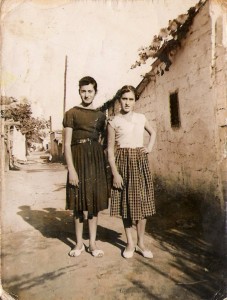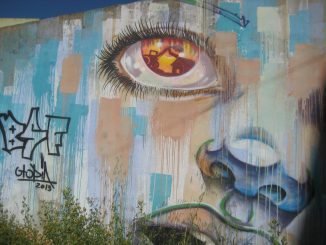
slums

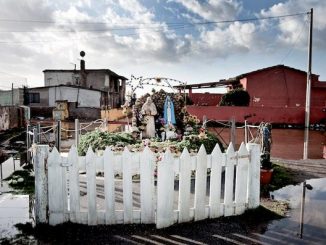
The Idroscalo, a self-grown neighborhood on the coast of Rome
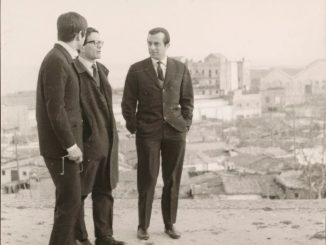
Group photo in Montjuic
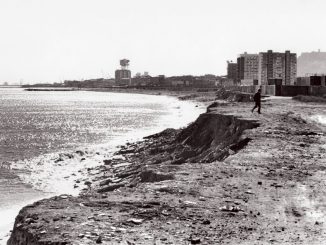
We have always been a frontier: Icària neighbourhood, before becoming the Vila Olìmpica

The ghosts of San Berillo
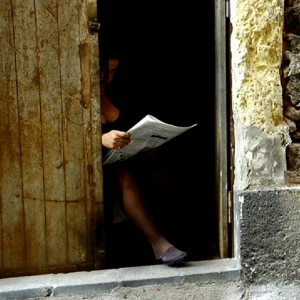 Different cities follow one another on the same site and under the same name, writes Italo Calvino, born and dying without knowing one another, without communication among themselves. At time even the names of the inhabitants remain the same, and their voices’ accent, and also the features of the faces; but the gods who live beneath names and above places have gone off without a word and outsiders have settled in their place. It is pointless to ask whether the new gods are better or worse than the old, since there is no connection between them… We recommend you another Italian documentary movie: Edoardo Morabito and Irma Vecchio’s I fantasmi di San Berillo (2013), first prize at Torino Film Festival. The demolition of this old neighbourhood in the centre of Catania (Sicily), in 1958, was the biggest urban evisceration in post-war Italy, linked (as everything in the country) with Vatican’s Società Generale Immobiliare: 30.000 people where displaced towards the peripheries. It was the same year in which brothels were banned: prostitutes were forced to work underground, and what was left of San Berillo turned into one of the biggest “red light districts” of the Mediterranean. So the story of the neighbourhood went on for another half century, until 2001, when a new police operation evicted again prostitutes and transvestites from their houses and streets. Today many plots are still unoccupied, and some became new favelas (see this 2012 video). The documentary shifts visually from past to present, and the images are associated with the fascinating words of writer Goliarda Sapienza, born in San Berillo in 1924.
Different cities follow one another on the same site and under the same name, writes Italo Calvino, born and dying without knowing one another, without communication among themselves. At time even the names of the inhabitants remain the same, and their voices’ accent, and also the features of the faces; but the gods who live beneath names and above places have gone off without a word and outsiders have settled in their place. It is pointless to ask whether the new gods are better or worse than the old, since there is no connection between them… We recommend you another Italian documentary movie: Edoardo Morabito and Irma Vecchio’s I fantasmi di San Berillo (2013), first prize at Torino Film Festival. The demolition of this old neighbourhood in the centre of Catania (Sicily), in 1958, was the biggest urban evisceration in post-war Italy, linked (as everything in the country) with Vatican’s Società Generale Immobiliare: 30.000 people where displaced towards the peripheries. It was the same year in which brothels were banned: prostitutes were forced to work underground, and what was left of San Berillo turned into one of the biggest “red light districts” of the Mediterranean. So the story of the neighbourhood went on for another half century, until 2001, when a new police operation evicted again prostitutes and transvestites from their houses and streets. Today many plots are still unoccupied, and some became new favelas (see this 2012 video). The documentary shifts visually from past to present, and the images are associated with the fascinating words of writer Goliarda Sapienza, born in San Berillo in 1924.

Homegrown cities: THIS is sustainable development!
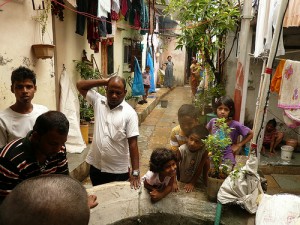 The activists of URBZ collective (of which we wrote in a previous post) are promoting a crowdfunding campaign to develop a plot of land in the neighbourhood of Bhandup in the northwestern suburbs of Mumbai. Their intention is to build there an affordable house, compatible with local construction styles: “homegrown“, and produced in collaboration with local constructors. The house will be sold at reasonable conditions to residents, thus providing the funds for a new project. The idea is to contribute to develop better life conditions for the residents of the so-called “slums”, without depending on international aid or having to rely on NGOs. This homegrown development works against the logic of the big eviction and relocation projects promoted by the state: as happened too often, these top-down projects end up eradicating the population and forcing them into vertical housing blocks, which represent the degree zero of architectural, urban and social thinking, and have been responsible for countless man-made urban disasters in poor and rich countries alike.
The activists of URBZ collective (of which we wrote in a previous post) are promoting a crowdfunding campaign to develop a plot of land in the neighbourhood of Bhandup in the northwestern suburbs of Mumbai. Their intention is to build there an affordable house, compatible with local construction styles: “homegrown“, and produced in collaboration with local constructors. The house will be sold at reasonable conditions to residents, thus providing the funds for a new project. The idea is to contribute to develop better life conditions for the residents of the so-called “slums”, without depending on international aid or having to rely on NGOs. This homegrown development works against the logic of the big eviction and relocation projects promoted by the state: as happened too often, these top-down projects end up eradicating the population and forcing them into vertical housing blocks, which represent the degree zero of architectural, urban and social thinking, and have been responsible for countless man-made urban disasters in poor and rich countries alike.
- Homegrown cities project en Urbz.net
- Join Homegrown cities crowdfunding on indiegogo
- Airoots/Eirut, Matias Echanove and Raoul Srivastava‘s blog
- Interview with Amar Mirjankar, a local contractor the activists are working with [video].
- Documentación sobre la forma local de construir viviendas baratas: video, y artículo “The 2,5 lakh rupee house” en Urbz.net
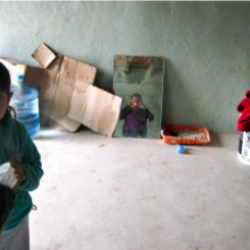
Tijuana’s Flowers of the Rancho

More “rrom” evictions in Rome
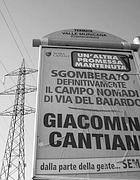 Following the policies of the previous left-wing administration, Rome's right-wing city council is executing a series of fast and almost illegal evictions against the few rrom settlements still resisting within the city (see Amnesty International declaration on 9/28/2012 eviction in Tor de' Cenci). The pretext are the alleged "problems to circulation" and the need for "urban decency", in a city in which the inauguration of a store can paralyze traffic for a whole evening, and where the parties ruling the city council break the norms on the use of public spaces. The residents of the settlements, some of which have been living more than 15 years in Rome, are forced to move to the extreme periphery, in isolated "solidarity villages" under a strict surveillance: often they resist actively to deportations. These intervention inevitably summon back the memory of the policies towards the popular neighborhoods in Rome's center during Fascism (1921-1945): the residents considered less valuable were evicted towards the suburbs, and forced to live in borgate neighborhoods, poorly built and cut off from the town.
Following the policies of the previous left-wing administration, Rome's right-wing city council is executing a series of fast and almost illegal evictions against the few rrom settlements still resisting within the city (see Amnesty International declaration on 9/28/2012 eviction in Tor de' Cenci). The pretext are the alleged "problems to circulation" and the need for "urban decency", in a city in which the inauguration of a store can paralyze traffic for a whole evening, and where the parties ruling the city council break the norms on the use of public spaces. The residents of the settlements, some of which have been living more than 15 years in Rome, are forced to move to the extreme periphery, in isolated "solidarity villages" under a strict surveillance: often they resist actively to deportations. These intervention inevitably summon back the memory of the policies towards the popular neighborhoods in Rome's center during Fascism (1921-1945): the residents considered less valuable were evicted towards the suburbs, and forced to live in borgate neighborhoods, poorly built and cut off from the town.
- Video of the eviction of Tor di Quinto settlement in summer 2012; Photos; Description :: Video Rom a Roma da vicolo Savini alla Pontina 1 - 2
- Fernando SALSANO (2007) The guts of Rome. PhD thesis on the monumentalization of the center and the birth of borgate during fascism.
- In august 2012 urbanist Italo INSOLERA died in Rome; together with Antonio Cederna, they were among the few authoritative fueron voices that kept denouncing those they called "enemies of the human race": real estate speculators. A commentary in Eddyburg, the best webpage on cities and urban transformation in Italy.

“Re-cordar” Can Ricart: to pass it back through the heart
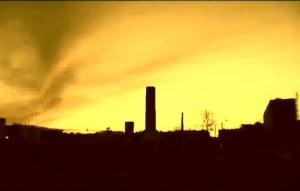 el desahucio
"bueno,
en primer lugar, te sientes echado, no querido, violentado. se rompe de pronto el universo ese repetitivo e invariable y, sin avisar, todo zozobra,
nada parece real.
incluso los cambios en el barrio,
los derribos,
no tienen ninguna connotación positiva, sólo resultaban amenazadores,
tristes.
trasladar una empresa es complicado.
es decir,
debería serlo, pq una empresa, por encima de todo,
la forman personas.
eso quiere decir q se trastorna –de pronto- toda la cosmogonía de tooodos los integrantes...
el desahucio
"bueno,
en primer lugar, te sientes echado, no querido, violentado. se rompe de pronto el universo ese repetitivo e invariable y, sin avisar, todo zozobra,
nada parece real.
incluso los cambios en el barrio,
los derribos,
no tienen ninguna connotación positiva, sólo resultaban amenazadores,
tristes.
trasladar una empresa es complicado.
es decir,
debería serlo, pq una empresa, por encima de todo,
la forman personas.
eso quiere decir q se trastorna –de pronto- toda la cosmogonía de tooodos los integrantes... 
Urban Typhoon: User-generated cities in Mumbai
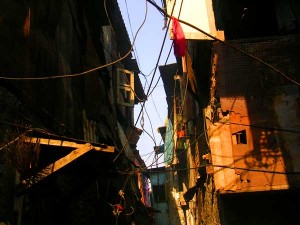 Who is not frightened by the idea of the unstoppable growth of cities in Asia and in the former "third world", or by the perspective (apocalyptical, though critically framed) of moving towards a planet of slums? But in the places closer to this phenomenon - for example in the popular neighborhoods of Mumbai, India - the idea of slum has been criticized since many decades. These urban zones that don't even deserve being called neighborhoods, always presented towards the exterior as marked by lacks (of hygiene, of safety, of integration, of control, even of morality), under a deeper scrutiny reveal histories and dynamics complex and functional, that had been interpreted in various forms according to the different theories. Based in an office in Dharavi-Koliwada (the enormous neighborhood popularized by Slumdog millionaire), the two urban activists Matias ECHANOVE and Rahul SRIVASTAVA (from Urbz collective) show how a series of spontaneous social structures, internal to the so-called slums, cause a constant improvement and development, often obstructed by local authorities or by urban reform plans. In territories as thick and reticular as forests of mangroves, the only valid ways to development are those generated by their very users: homegrown, as the neighborhoods themselves.
Who is not frightened by the idea of the unstoppable growth of cities in Asia and in the former "third world", or by the perspective (apocalyptical, though critically framed) of moving towards a planet of slums? But in the places closer to this phenomenon - for example in the popular neighborhoods of Mumbai, India - the idea of slum has been criticized since many decades. These urban zones that don't even deserve being called neighborhoods, always presented towards the exterior as marked by lacks (of hygiene, of safety, of integration, of control, even of morality), under a deeper scrutiny reveal histories and dynamics complex and functional, that had been interpreted in various forms according to the different theories. Based in an office in Dharavi-Koliwada (the enormous neighborhood popularized by Slumdog millionaire), the two urban activists Matias ECHANOVE and Rahul SRIVASTAVA (from Urbz collective) show how a series of spontaneous social structures, internal to the so-called slums, cause a constant improvement and development, often obstructed by local authorities or by urban reform plans. In territories as thick and reticular as forests of mangroves, the only valid ways to development are those generated by their very users: homegrown, as the neighborhoods themselves. 
Istanbul, a city without limits. Documentary movie
 "In Istanbul, we crossed the ecological limits, crossed the population limits, crossed the ecological limits. If you ask me where it is all going to lead, I will quote from Doğan Kuban: chaos" Mücella Yapıcı, chamber of architecture of Istanbul.
"In Istanbul, we crossed the ecological limits, crossed the population limits, crossed the ecological limits. If you ask me where it is all going to lead, I will quote from Doğan Kuban: chaos" Mücella Yapıcı, chamber of architecture of Istanbul.
- Ekümenopolis: Ucu Olmayan Şehir (Ecumenopolis: City Without Limits) (2011) a movie by Imre Azem, will be in Barcelona on november 15th, 8pm at Traslaciones festival in CCCB. Director Imre Azem will participate in the debate Istanbul relatos fuera de campo on wednesday 16th at 7:30pm. [Trailer1] [Trailer2] [Web]

Larache in the summer time
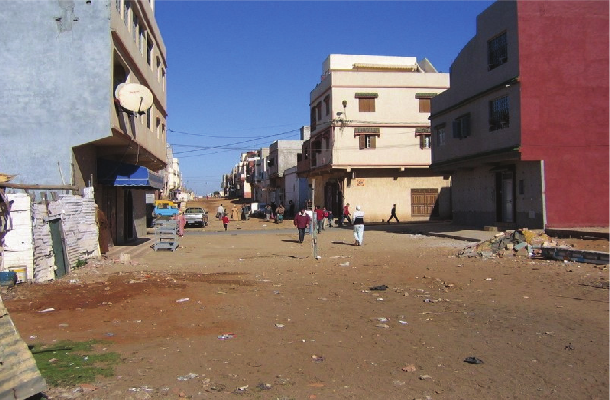
On summer nights, in the center of Larache (a port on the Atlantic, 80km south of Tanger) stroll all moroccans that came back from Europe on vacations. New cars, european clothes, overconfident attitudes: almost every family of the city has some relative in Spain, England, Belgium, France, Netherlands. In Larache, fish abounds, vegetables are cheap, and housing is affordable. It was here that the first experience of public housing in Morocco took place in the 20s: the neighborhood of Kalleto (Hay Jadid, New neighborhood), built for slum dwellers and migrants from aroubía, rural areas. For its inhabitants, each fight, every bad night, is felt as a shame, for it reminds them they are not in Europe, where everything is perfect: as the shikis (stuck up) of the center seem to assert, parading their pretended wealth.

Photos: Barcelona’s Montjuïc
Four photos of Montjuïc mountain, when there still were people living on it. Even if for history it was only “slums”, many of them remember houses, written records, roads and street numbers. These photos come from private collections of former residents of “Eduardo Aunós” neighborhood. The old slum dwellers, almost all of them from Murcia or Andalusia, had to leave their houses in the 1920s, because of the celebration of an Universal Exposition. They were relocated in the Casas Baratas, but then their sons and nephews were evicted again at the end of the century. The need for land hit again those immigrant families; and it doesn’t matter how many generation they had been living in their “welcoming land”.…

Recipes to eliminate poverty in Buenos Aires
 On december 8th, 2010, the Metropolitan and Federal Police attacked the 200 families who had settled in Parque Iberoamericano (Buenos Aires), as if it was an enemy army: the operation ended with two deaths and many injured. Then, the local gobernment and mass media promoted xenophobia, presenting the abandoned park as "squatted" by bolivians and paraguayans linked with drug dealing: so racist groups from the neighborhoods, together with violent hooligans - patotas de barrabravas , close and often directly hired by the local government- continued the job, killing two more of the settlers.
On december 8th, 2010, the Metropolitan and Federal Police attacked the 200 families who had settled in Parque Iberoamericano (Buenos Aires), as if it was an enemy army: the operation ended with two deaths and many injured. Then, the local gobernment and mass media promoted xenophobia, presenting the abandoned park as "squatted" by bolivians and paraguayans linked with drug dealing: so racist groups from the neighborhoods, together with violent hooligans - patotas de barrabravas , close and often directly hired by the local government- continued the job, killing two more of the settlers. 
Barcelona: La Perona (1985-1989)
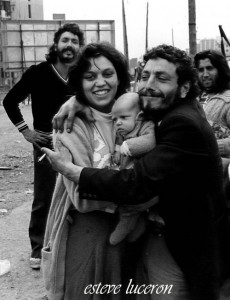 “Esteve Lucerón (Pobla de Segur, 1950), photographer, portrayed the gypsy settlement of La Perona for 10 years, from 1980 until its demolition. His photos are strongly influenced by the american reporters who worked on the Great Depression of 1929, Walker Evans, Dorothea Lange and Lewis Hine, especially in the relationship towards the people he portrayed: empathy, self control, he never manipulates his subjects to stress the drama, never breaks the intimacy, doesn’t steal poverty. He doesn’t either have a sweetened merciful attitude: there’s social critique, it’s an anthropological document, historically valuable, since these settlements belong to a time of economical prosperity in Spain, when real estate speculation and conflicts among “lineages” or subgroups of gypsies burst, as the City Council decided to relocate – transfer/deport – some groups from an area to another with no regard except for the number of people. Lucerón gives a personal view of it, with a special attention towards children, and towards gypsy’s typical sense of humor, naughty and defiant“. Froum María José Furio‘s review on her blog. Some photos: [1][2]
“Esteve Lucerón (Pobla de Segur, 1950), photographer, portrayed the gypsy settlement of La Perona for 10 years, from 1980 until its demolition. His photos are strongly influenced by the american reporters who worked on the Great Depression of 1929, Walker Evans, Dorothea Lange and Lewis Hine, especially in the relationship towards the people he portrayed: empathy, self control, he never manipulates his subjects to stress the drama, never breaks the intimacy, doesn’t steal poverty. He doesn’t either have a sweetened merciful attitude: there’s social critique, it’s an anthropological document, historically valuable, since these settlements belong to a time of economical prosperity in Spain, when real estate speculation and conflicts among “lineages” or subgroups of gypsies burst, as the City Council decided to relocate – transfer/deport – some groups from an area to another with no regard except for the number of people. Lucerón gives a personal view of it, with a special attention towards children, and towards gypsy’s typical sense of humor, naughty and defiant“. Froum María José Furio‘s review on her blog. Some photos: [1][2]
- Esteve Lucerón. La Perona (1985-1989). Agenda de la Imatge n. 56 (2010). Xavier Camino and Pili Díaz Giner wrote the text, and Jordi Gratacós, secretary of UPIFC, made the laboratory work on the photo negatives. [Exposition announced in UPIFC webpage]
